Hãy nhập câu hỏi của bạn vào đây, nếu là tài khoản VIP, bạn sẽ được ưu tiên trả lời.

\(y'=x^2-2\left(m-1\right)x+3\left(m-1\right)\)
Hàm đồng biến trên khoảng đã cho khi với mọi \(x>1\) ta luôn có:
\(g\left(x\right)=x^2-2\left(m-1\right)x+3\left(m-1\right)\ge0\)
\(\Rightarrow\min\limits_{x>1}g\left(x\right)\ge0\)
Do \(a=1>0;-\dfrac{b}{2a}=m-1\)
TH1: \(m-1\ge1\Rightarrow m\ge2\)
\(\Rightarrow g\left(x\right)_{min}=f\left(m-1\right)=\left(m-1\right)^2-2\left(m-1\right)^2+3\left(m-1\right)\ge0\)
\(\Rightarrow\left(m-1\right)\left(4-m\right)\ge0\Rightarrow1\le m\le4\Rightarrow2\le m\le4\)
TH2: \(m-1< 1\Rightarrow m< 2\Rightarrow g\left(x\right)_{min}=g\left(1\right)=m\ge0\)
Vậy \(0\le m\le4\)

Tiếp tuyến có hệ số góc bằng 1
\(y'=\dfrac{m\left(3m+1\right)-\left(-m^2+m\right)}{\left(x+m\right)^2}=\dfrac{4m^2}{\left(x+m\right)^2}\)
\(\Rightarrow\left\{{}\begin{matrix}x=\dfrac{m^2-m}{3m+1}\\\dfrac{4m^2}{\left(x+m\right)^2}=1\end{matrix}\right.\) \(\Leftrightarrow\left\{{}\begin{matrix}x=\dfrac{m^2-m}{3m+1}\\\left[{}\begin{matrix}2m=x+m\\-2m=x+m\end{matrix}\right.\end{matrix}\right.\)
\(\Leftrightarrow\left\{{}\begin{matrix}x=\dfrac{m^2-m}{3m+1}\\\left[{}\begin{matrix}x=m\\x=-3m\end{matrix}\right.\end{matrix}\right.\) \(\Rightarrow\left[{}\begin{matrix}m=\dfrac{m^2-m}{3m+1}\\-3m=\dfrac{m^2-m}{3m+1}\end{matrix}\right.\)
\(\Leftrightarrow...\)

Thầy tui cho cái ghi nhớ thế này \(\lim\limits\left(u_n-a\right)=0\Leftrightarrow\lim\limits u_n=a\) . Cơ mà theo tui cứ nên biến đổi từ từ đã :v
\(\lim\limits\left(\dfrac{1-4an+4a^2n^2-8an^2+4an-2a-16n^2+8n-4}{4n^2-2n+1}\right)\)
\(=\lim\limits\dfrac{4a^2n^2-8n^2\left(a+2\right)-2a+8n-3}{4n^2-2n+1}=\lim\limits\dfrac{4a^2-8\left(a+2\right)}{4}=0\Leftrightarrow a^2-2a-4=0\Leftrightarrow\left[{}\begin{matrix}a=1+\sqrt{5}\\a=1-\sqrt{5}\end{matrix}\right.\Rightarrow tong-S=2\)

a: \(y=-x^3+\left(m+2\right)x^2-3x\)
=>\(y'=-3x^2+2\left(m+2\right)x-3\)
=>\(y'=-3x^2+\left(2m+4\right)\cdot x-3\)
Để hàm số nghịch biến trên R thì \(y'< =0\forall x\)
=>\(\left\{{}\begin{matrix}\left(2m+4\right)^2-4\cdot\left(-3\right)\left(-3\right)< =0\\-3< 0\end{matrix}\right.\)
=>\(4m^2+16m+16-4\cdot9< =0\)
=>\(4m^2+16m-20< =0\)
=>\(m^2+4m-5< =0\)
=>\(\left(m+5\right)\left(m-1\right)< =0\)
TH1: \(\left\{{}\begin{matrix}m+5>=0\\m-1< =0\end{matrix}\right.\)
=>\(\left\{{}\begin{matrix}m>=-5\\m< =1\end{matrix}\right.\)
=>-5<=m<=1
TH2: \(\left\{{}\begin{matrix}m+5< =0\\m-1>=0\end{matrix}\right.\)
=>\(\left\{{}\begin{matrix}m>=1\\m< =-5\end{matrix}\right.\)
=>\(m\in\varnothing\)
b: \(y=x^3-3x^2+\left(1-m\right)x\)
=>\(y'=3x^2-3\cdot2x+1-m\)
=>\(y'=3x^2-6x+1-m\)
Để hàm số đồng biến trên R thì \(y'>=0\forall x\)
=>\(\left\{{}\begin{matrix}\text{Δ}< =0\\a>0\end{matrix}\right.\)
=>\(\left\{{}\begin{matrix}3>0\\\left(-6\right)^2-4\cdot3\left(1-m\right)>=0\end{matrix}\right.\)
=>\(36-12\left(1-m\right)>=0\)
=>\(36-12+12m>=0\)
=>12m+24>=0
=>m+2>=0
=>m>=-2

a: \(y=-\dfrac{1}{3}x^3-mx^2+4x+2021m\)
=>\(y'=-\dfrac{1}{3}\cdot3x^2-m\cdot2x+4\)
=>\(y'=-x^2-2m\cdot x+4\)
Để hàm số nghịch biến trên R thì \(y'< =0\forall x\)
=>\(\left\{{}\begin{matrix}\text{Δ}< =0\\a< 0\end{matrix}\right.\Leftrightarrow\left\{{}\begin{matrix}\left(-2m\right)^2-4\cdot\left(-1\right)\cdot4< =0\\-1< 0\end{matrix}\right.\)
=>\(4m^2+16< =0\)
mà \(4m^2+16>=16>0\forall m\)
nên \(m\in\varnothing\)
b: \(y=-\dfrac{1}{3}\cdot x^3-\dfrac{1}{2}\cdot m\cdot x^2+x+20\)
=>\(y'=-\dfrac{1}{3}\cdot3x^2-\dfrac{1}{2}\cdot m\cdot2x+1\)
=>\(y'=-x^2-m\cdot x+1\)
Để hàm số nghịch biến trên R thì \(y'< =0\forall x\)
=>\(\left\{{}\begin{matrix}\text{Δ}< =0\\a< 0\end{matrix}\right.\Leftrightarrow\left\{{}\begin{matrix}\left(-m\right)^2-4\cdot\left(-1\right)\cdot1< =0\\-1< 0\end{matrix}\right.\)
=>\(m^2+4< =0\)
mà \(m^2+4>=4>0\forall m\)
nên \(m\in\varnothing\)
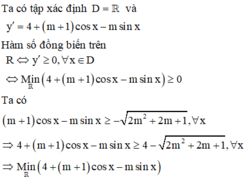
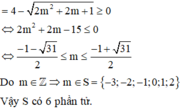
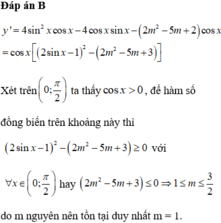
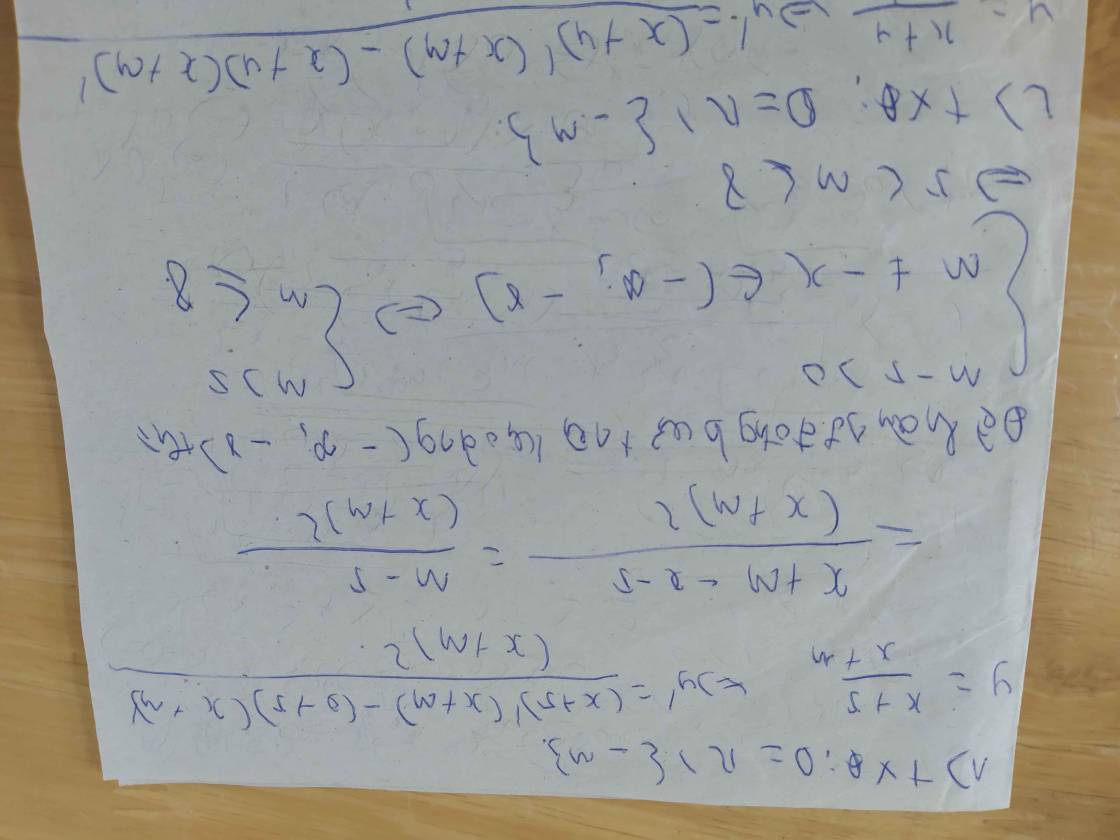
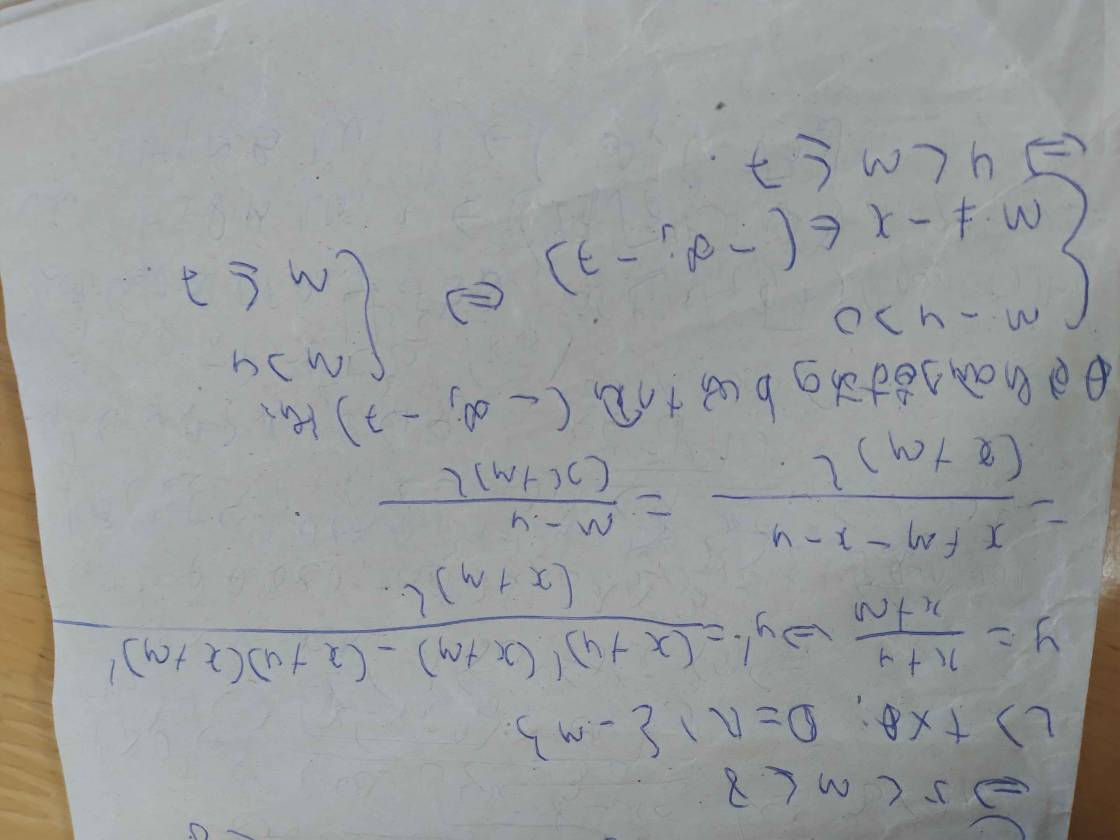
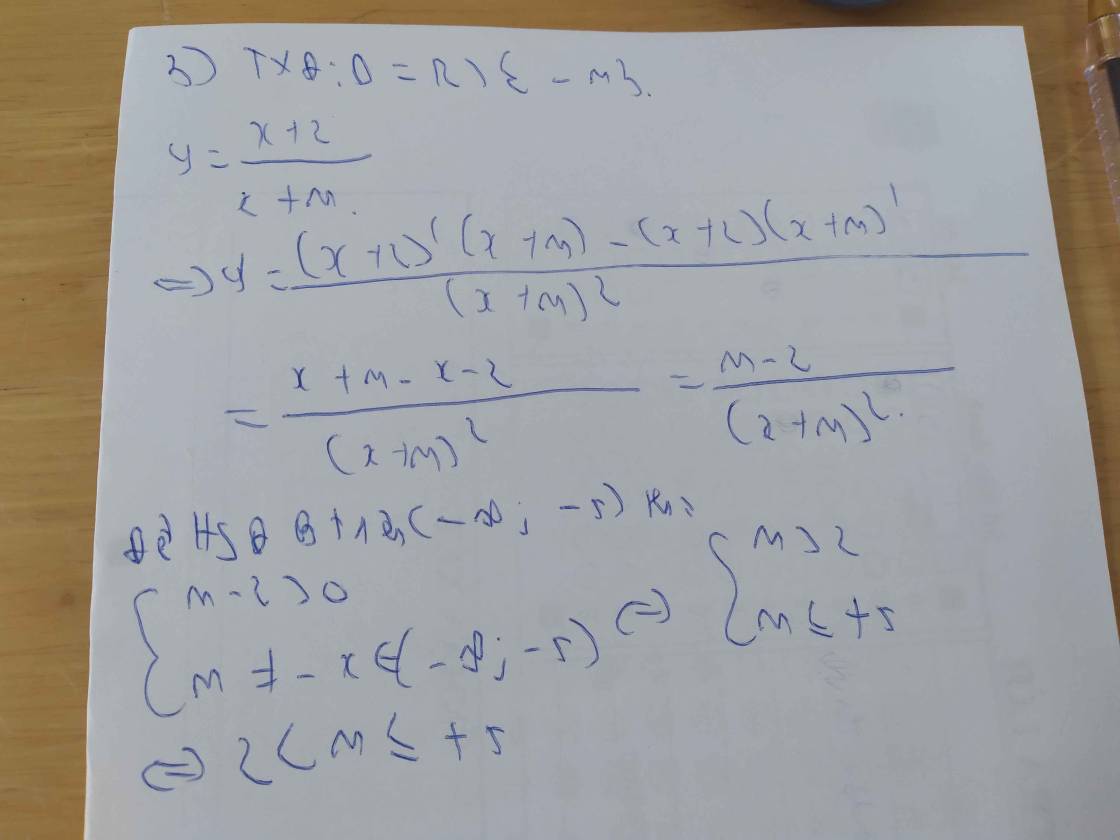
Hàm bậc 2 có \(a=1>0;-\dfrac{b}{2a}=-\dfrac{m+1}{2}\) nên đồng biến trên \(\left(-\dfrac{m+1}{2};+\infty\right)\)
Để hàm đồng biến trên khoảng đã cho thì \(-\dfrac{m+1}{2}\le-2\Rightarrow m\ge3\)
\(\Rightarrow\) Tập đã cho có vô số phần tử
Còn phần tử nguyên thì có \(2021-3=2018\) phần tử